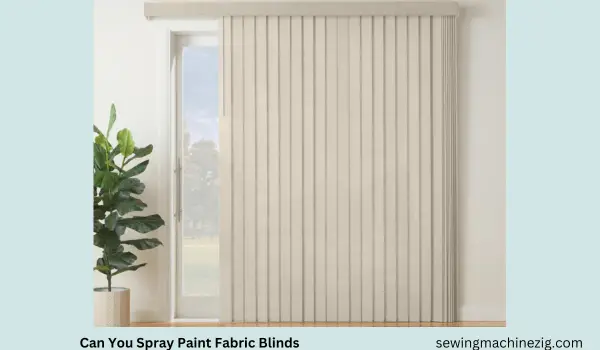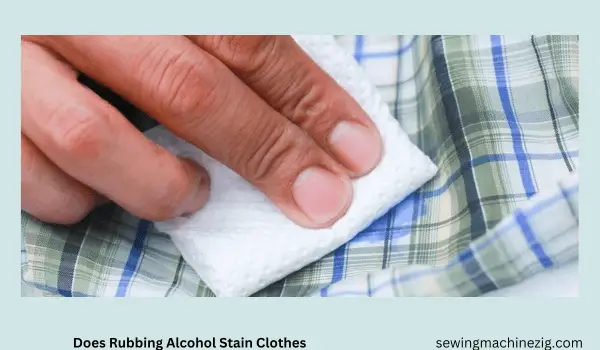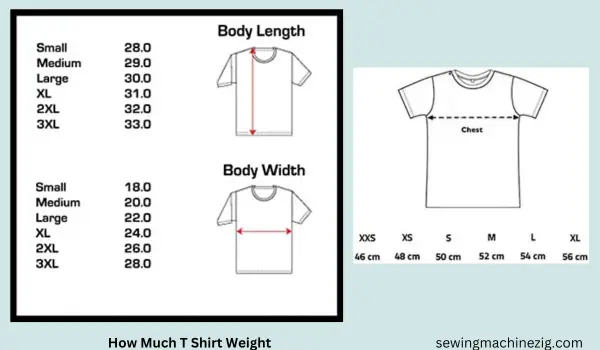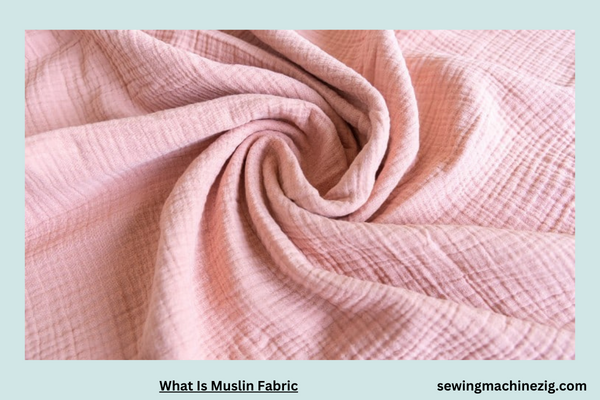
Muslin fabric, a versatile and commonly used material, has been a staple in the world of textiles for centuries. It’s a plain-weave, lightweight cotton fabric known for its softness and breathability, making it a popular choice for a wide range of sewing and crafting projects. Whether you’re a seasoned seamstress or a novice in the realm of fabrics, understanding the properties and uses of muslin is essential.
In this article, we’ll delve into the characteristics of muslin fabric, its various applications in sewing and beyond, and why it remains a go-to choice for professionals and hobbyists alike.
What Is Muslin Fabric Detailed Answer
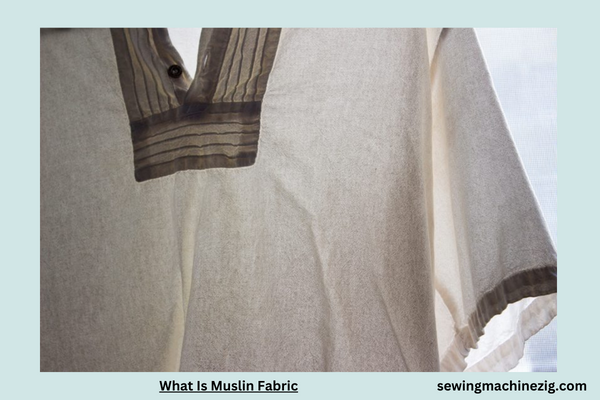
What Is Muslin Fabric is a versatile and widely used textile in the world of sewing and crafting. Understanding what muslin fabric is and its various applications can be a valuable asset for any DIY enthusiast. In this comprehensive guide, we will explore What Is Muslin Fabric, its characteristics, and how you can use it in your sewing and crafting projects.
Muslin is a lightweight, plain-weave cotton fabric known for its breathability and versatility. It is typically made from unbleached or white cotton and can vary in thread count and density. Muslin fabric is widely used in the textile industry for a range of purposes due to its soft and absorbent nature.
Characteristics of Muslin Fabric:
- Lightweight: Muslin is a lightweight fabric, making it ideal for a variety of applications.
- Breathable: Its open weave allows for good air circulation, making it comfortable to wear and suitable for warm climates.
- Soft Texture: Muslin fabric is soft to the touch, making it comfortable against the skin.
- Absorbent: It can absorb moisture, which is useful for applications like making baby blankets or cleaning cloths.
- Dye-Friendly: Muslin takes dye well, allowing for customization in various colors.
- Affordable: It is a cost-effective fabric, making it accessible for sewing and crafting projects.
Common Uses of Muslin Fabric:
- Fashion and Garments: Muslin is often used for creating prototypes or test garments known as “muslins” before cutting the final fabric.
- Quilting: Muslin is used as a backing fabric in quilting, providing a smooth and durable layer.
- Backdrops: In photography and theater, muslin is used as a backdrop material due to its versatility and ability to take dyes and paints.
- Crafting: Muslin is a popular choice for crafting projects like sachets, stuffed animals, and home décor items.
How to Work with Muslin Fabric:
- Cutting: Use sharp fabric scissors or a rotary cutter to cut muslin fabric. Ensure your cuts are precise and follow your project’s pattern.
- Sewing: Muslin is easy to sew with a sewing machine or by hand. It’s advisable to use a universal needle and a standard thread suitable for cotton fabric.
- Dyeing: If you wish to dye muslin, select a suitable fabric dye and follow the dyeing instructions. Muslin takes dyes well, allowing for a range of color options.
- Care: Muslin fabric is typically machine washable. Follow the care instructions provided on the fabric bolt to ensure its longevity.
In summary, muslin fabric is a versatile material with a wide range of applications in sewing, crafting, and beyond. Its lightweight, breathable, and absorbent nature, along with its affordability, make it a popular choice among DIY enthusiasts. Understanding What Is Muslin Fabric and how to work with it opens up a world of creative possibilities for your projects.
What Is The Difference Between Cotton & Muslin?
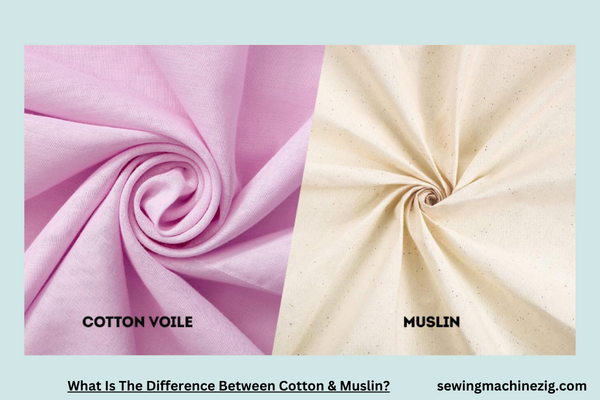
Cotton and muslin are both popular fabrics in the world of sewing and crafting, but they have distinct characteristics that set them apart. Understanding the difference between cotton and muslin is essential for choosing the right material for your projects.
In this comprehensive guide, we will explore the unique features of each fabric, their uses, and how to distinguish between them.” What Is Muslin Fabric”
Cotton Fabric:
Cotton is a natural fiber derived from the cotton plant’s seed fibers. It has been used for centuries in various applications due to its comfort, breathability, and versatility. Here are the key characteristics of cotton fabric:
- Natural Fiber: Cotton is a plant-based natural fiber, making it biodegradable and environmentally friendly.
- Soft and Comfortable: Cotton fabric is soft to the touch, making it ideal for clothing, bedding, and linens.
- Breathable: Cotton is highly breathable, allowing air to pass through and making it suitable for warm-weather garments.
- Absorbent: Cotton can absorb moisture, which is why it is often used for towels and bathrobes.
- Versatile: Cotton can be woven into various fabric types, such as twill, sateen, or plain weave, to suit different purposes.
- Dye-Friendly: Cotton takes dye well, allowing for a wide range of color options.
Muslin Fabric:
Muslin is a type of cotton fabric known for its plain weave and lightweight nature. It has unique characteristics that set it apart from regular cotton fabric:
- Lightweight: Muslin is exceptionally lightweight and often used for applications where a lighter fabric is required.
- Plain Weave: Muslin has a plain weave, with a simple over-under pattern of the threads.
- Versatility: Muslin is a versatile fabric used for prototypes, quilt backing, crafting, and more.
- Cost-Effective: Muslin is affordable and accessible for various sewing and crafting projects.
Differences Between Cotton and Muslin:
- Weight: Muslin is lighter than regular cotton fabric, making it suitable for lightweight projects.
- Texture: While both fabrics are soft, muslin may have a slightly coarser texture due to its plain weave.
- Use: Cotton is often used for clothing, bedding, and a wide range of textile applications. Muslin is typically used for prototypes, quilt backing, and crafting projects.
How to Tell the Difference:
To distinguish between cotton and muslin, you can:
- Examine the Weave: Muslin has a plain weave, which gives it a simple, grid-like pattern.
- Check the Weight: Muslin is noticeably lighter than most regular cotton fabrics.
- Read the Label: When in doubt, check the fabric label or ask the seller for information about the material.
In summary, while cotton and muslin are both made from the same natural fiber, they have distinct characteristics and are suitable for different purposes. Understanding the difference between cotton and muslin allows you to choose the right fabric for your specific sewing or crafting projects.” What Is Muslin Fabric”
Is Muslin Good For Sewing?
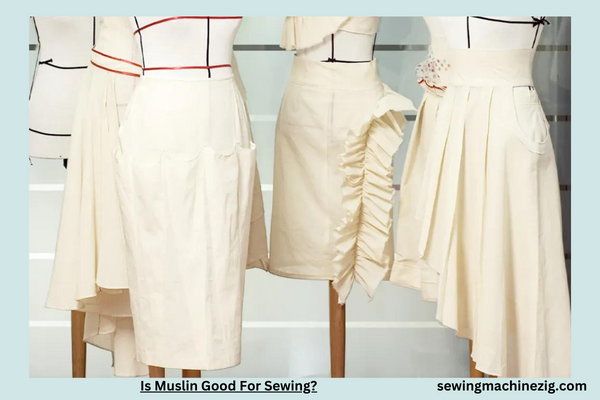
Muslin fabric is a versatile textile with a wide range of applications in the world of sewing. Whether you’re a beginner or an experienced seamstress, understanding if muslin is good for sewing and how to use it can be a valuable asset for your crafting and garment-making projects.
In this comprehensive guide, we will explore the benefits of using muslin for sewing, its various uses, and how to work with this fabric effectively.
Is Muslin Good for Sewing?
Yes, muslin is an excellent choice for sewing due to its numerous advantages:
- Affordability: Muslin is a cost-effective fabric, making it accessible for both beginners and experienced sewers.
- Versatility: It can be used for a variety of sewing applications, from creating prototypes and test garments to crafting and quilting.
- Ease of Sewing: Muslin is easy to work with, making it a suitable choice for all skill levels. It can be sewn by hand or with a sewing machine.
- Drape and Drift: Muslin fabric has a lovely drape, making it suitable for creating garments that require fluidity and movement, such as dresses and skirts.
- Muslin Prototypes: Sewers often use muslin for creating prototypes or “muslins” before cutting into their final fabric. This allows for adjustments and fitting without wasting expensive materials.
Common Uses for Muslin in Sewing:
- Muslin Prototypes: Muslin is often used to create test garments to check the fit and design of a pattern before using the final fabric.
- Pattern Development: It’s used to make and refine sewing patterns, ensuring that they fit well and are comfortable.
- Quilting Backing: Muslin serves as a backing fabric in quilting, providing a smooth and durable layer for quilts.
- Crafting: Muslin can be used for crafting projects such as sachets, stuffed animals, and home décor items.
- Draped Garments: The drape and fluidity of muslin make it suitable for draped garments and designs.
How to Work with Muslin for Sewing:
- Selecting the Right Type: Muslin comes in different varieties, so choose the one that best suits your project. Muslin with a tighter weave is suitable for test garments, while a looser weave may be preferable for draping projects.
- Cutting and Sewing: Use sharp fabric scissors or a rotary cutter to cut muslin fabric. Sewing with muslin is straightforward, whether by hand or with a sewing machine.
- Fitting and Adjustments: When creating muslin prototypes, be prepared to make fitting adjustments as needed. This is a key benefit of using muslin before cutting into your final fabric.
- Draping: For draped designs, muslin’s drape and fluidity are advantageous. Practice draping to achieve your desired results.
In summary, muslin is an excellent choice for sewing due to its affordability, versatility, and ease of use. Whether you’re making prototypes, refining patterns, quilting, or crafting, muslin is a valuable fabric that can help you achieve the best results in your sewing projects. Its drape and ease of handling make it a popular choice for sewers of all levels.
Conclusion
In summary, What Is Muslin Fabric is a versatile and indispensable material in the world of sewing and crafting. Its lightweight, breathable, and unbleached characteristics make it a top choice for various applications, including garment prototypes, pattern-making, drapery, and even culinary uses. Muslin’s natural fibers offer comfort and ease of use, while its affordability adds to its appeal.
Whether you’re a seasoned seamstress or just starting your sewing journey, muslin fabric is an essential tool that provides the perfect canvas for your creative projects.”What Is Muslin Fabric“
FAQS
Q1: What is muslin fabric, and how is it different from other fabrics?
Answer: Muslin fabric is a lightweight, plain-weave cotton fabric. It’s known for its breathability and versatility, making it suitable for a wide range of sewing projects. The term “muslin” is often used to describe both the fabric and a type of test garment used in fashion design.” What Is Muslin Fabric”
Q2: What are the common uses of muslin fabric in sewing?
Answer: Muslin fabric is commonly used for making test garments or “muslins” to check the fit and design of clothing patterns. It’s also used for sewing garments like dresses, blouses, and nightwear due to its comfort and drape.
Q3: Is muslin fabric suitable for quilting projects?
Answer: Yes, muslin fabric is often used in quilting as a backing or for creating foundation piecing templates. Its neutral color and lightweight nature make it a versatile choice in quilting.
Q4: Can muslin fabric be dyed or colored for specific sewing projects?
Answer: Muslin fabric is easily dyeable, allowing you to customize it for various sewing projects. Whether you need a specific color for your garments or crafts, muslin can be dyed to match your preferences.
Q5: What are the different types of muslin fabric available for sewing?
Answer: There are various types of muslin fabric, including unbleached muslin, bleached muslin, and specialty muslin-like cheesecloth and scrim. The choice depends on your project requirements.

